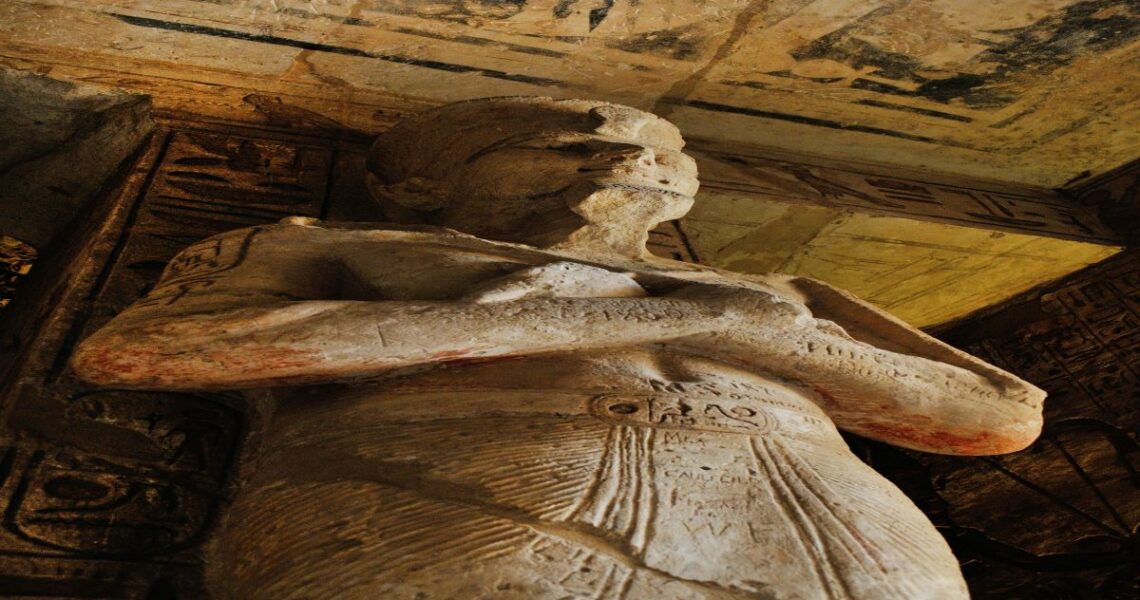New Tech Reveals Origin Of Egyptian Mummies’ Skin Color:
Just how much can you learn from the color of a person’s skin? Well, in the case of Egyptian mummies, it is now turning out to be quite a lot. Researchers have worked out a non-intrusive way to map the origins of ancient Egyptian embalming materials, and the composition of the substance that causes deep black coloration of many mummies’ skin is now revealing hitherto unknown geographic data. The study does not say whether these Egyptians were or were not dark skinned naturally, that’s another debate, but according to the latest high-tech analysis, many Egyptian mummies’ deep black skin color not only comes from tar but we now know where that tar came from.
Ancient Egyptian Skin Analysis: Without Damaging The Remains
Learning the secrets of ancient mummies without damaging their fragile remains has always been the number one challenge for Egyptologists. Recently, a team of French researchers have published a new research article in ACS’AnalyticalChemistry about a new non-penetrative way of analyzing ancient Egyptian skin by focusing on the “embalming bitumen” that gives mummies their dark colored skin.
This line of research was born in a 2016 paper published by the Royal Society in which lead author Professor K. A. Clark from the University of Bristol said mummification was practiced in ancient Egypt for more than 3000 years. The researchers discovered that the use of organicbalmswas a later introduction into burial customs, necessitated by more humid burial environments, especially in underground tombs.
Using mass spectrometry, the French team analyzed 39 mummies dating from 3200 BC to 395 AD and their study showed how petroleumbitumen(or natural asphalt) caused the dark Egyptian skin color of many mummies. In their study they state that “bitumen was used in 50% of New Kingdom to Late Period mummies, rising to 87% of Ptolemaic Roman Period mummies.” And they concluded that the application of black/dark brown balms to bodies “was deliberate after the New Kingdom reflecting changing funerary beliefs and shifts in religiousideology.”
A New Scientific Approach To Understanding Egyptian Skin Color
Building on the 2016 paper a recent releasefrom the American Chemical Society (ACS) explains that the embalmingmaterialsused by ancient Egyptians was a complex mixture of natural compounds such as “sugar gum, beeswax, fats, coniferous resins, and variable amounts of bitumen.” Better known as asphalt, or more generally as tar, bitumen is a highly viscous form of black petroleum that is made from fossilized plants and algae.
The team of researchers, led by Dr Charles Dutoit and Dr Didier Gourier, was recently funded by the. Agence Nationale de la Recherche also and the Centre de Recherche et de Restauration des. Musées de France to work out a new, less-destructive, technique of analyzing bitumen samples from ancient mummies.
The new method is known as “Electron Paramagnetic Resonance” (EPR), and tests bitumen samples for. “Vanadyl porphyrins and also carbonaceous radicals.” For those of you that didn’t already know. These are two of the many components that constitute bitumen. They are formed during the decomposition of photosynthetic life. And according to the researchers these two particular chemical signatures provide information on. “The presence, origin and processing of bitumen in the embalming material.”
Egyptian Skin Color On Mummies And Bitumen Trade
This new less-destructive analysis method, i.e. EPR, was tested on bitumen samples obtained from an ancient Egyptian.. sarcophagus, two human mummies and four animal mummies all dating to 744-30 BC. EPR yielded a set of chemical results that were then compared to reference samples. This comparative analysis informed the researchers that the relative amounts of these two specific compounds. “Could differentiate between bitumen of marine origin (such as from the Dead Sea) and land-plant origin (from a tar pit).”
Behind every treasure discovered in ancient Egypt there are endless stories of the producers, traders. Transporters also that passed on the raw materials that were ultimately used for mummification. Now, with EPR, Egyptologists are able to discern the geographic and environmental origins of bitumen samples taken from mummies. And this opens up a whole new avenue of research into ancient bitumen trade networks.
